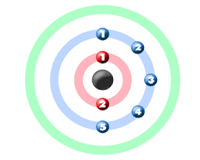Measurement of mass volume time and temperature in chemistry
Chemistry is a science and like all sciences, chemistry involves the measurement of mass volume time and temperature of various quantities. Often we need to measure accurately amounts of chemicals, perhaps solids ( powders, crystals), liquids ( acids, alkalies, solutions) or gases. Amounts of solids are usually measured in mass, amounts of liquids and gases in volume.
[wp_ad_camp_1]
To follow different chemical changes e might follow changes in mass or volume with time. All chemical changes involve energy changes. Often this energy change is a heat change which can be followed by recording changes in temperature.
| What to measure | Units | Measuring devices |
| Mass | milligram (mg) gram (g) kilogram (kg) 1000 mg= 1g 1000 g= 1 kg 1000 kg = 1 tonne | Beam balance Electronic balance |
| Volume | Cubic centimeters (cm3) 1000 cm3 = 1 dm3 1 dm3 = 1 litre 1000 dm3 = 1 m3 | Beaker Measuring cylinder Pipette Burette Volumetric flask Syringes |
| Time | Second (s) 60 s = 1 min 3600 s = 1 h | Stopwatch Stopclock |
| Temperature | Degree Celsius (˚C) | Mercury-in-glass Thermometer Electronic thermometer |
Measurement of Mass and Volume
The mass of the substance is the amount of matter it contains. In chemistry, we need to measure mass more accurately then the everyday way of measuring it in terms of amount such as a pinch of salt or a spoonful of sugar. We use balances to measure mass accurately.
[wp_ad_camp_2]
The two common types of balances used in schools and colleges laboratories are the beam balance and the electronic balance. In a beam balance, a weight is moved along a horizontal scale until it balances the mass of an object on the scale pan. Electronic balances are easier to use and can measure accurately to 0.01 g or even 0.001 g very quickly.
What is the unit of of mass in grams ?
The unit of mass while measuring it is the gram(s) for small amounts and the kilogram (Kg) for larger amount.
The volume of a substance is the amount of space it occupies. In the laboratory, it can be measured in varoius ways. Approximate volumes of liquids can be measured in a graduated beaker. For greater accuracy, a measuring cylinder or, for very accurate measurements, a pippete or burrete may be used. A volumetric flask is used to measure fixed volumes of liquid, and is used for preparing solutions of unknown concentration.
When measuring the volume of a liquid, it is important to read the volume at the bottom of the curved surface of the liquid (meniscus) in the container. Volumes can also be measured using syrings. Small plastic syringes are used for measuring small volumes of liquid. Such syrenges are used by doctors for injections. Larger syrenges are used to measure volumes of gases.
What is the unit of volume to measure it ?
Volume is usually measured in cubic centimetres ( cm3), though larger volumes may be in cubic decimetres ( dm3), or litters (l).
[wp_ad_camp_3]
measurement of Time and temperature
Time is measured in the laboratory using a stopwatch or stopclock. It is measured in seconds (s). Most stopclocks measure timing to the nearest second, but there are very accurate stopwatches that can be measure to 0.01 s ( hundredth of a second)
The temperature of a liquid or gas can be measured in degree Celsius (˚C) . the mercury-in-glass thermometer and alcohol-in-glass thermometer are common thermometers which are used in laboratory. Electronic thermometers are increasingly being used as they reduce the risk of mercury poisoning, if a mercury thermometer is broken while in use.
Temperature sensors or probes can record the temperature of a liquid over a period of time. Such results can then be fed into a computer and displayed as a graph of temperature against time. Devices which can capture experimental data in this way are known as data-loggers.


